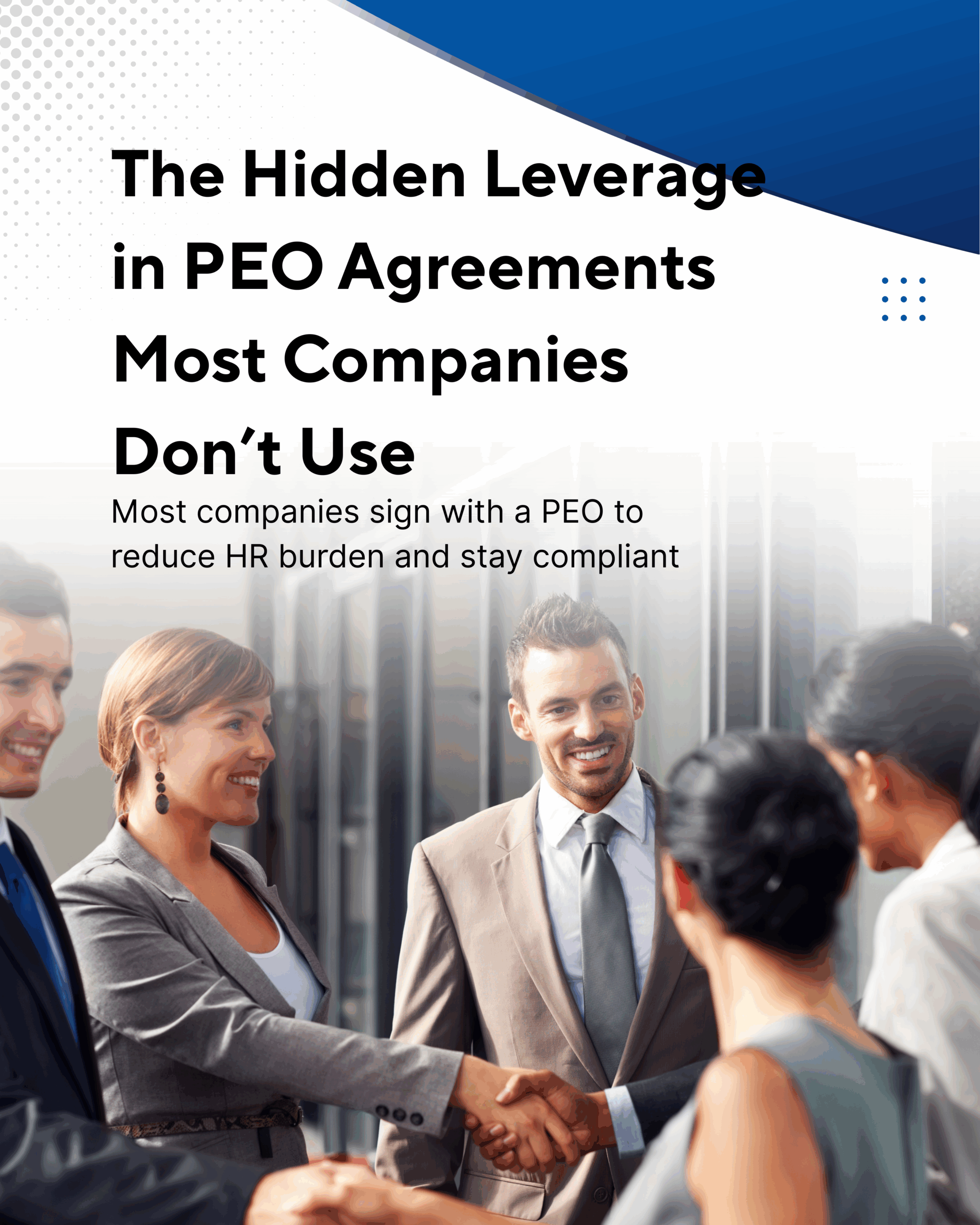Most companies sign with a PEO to reduce HR burden, stay compliant, and offer competitive benefits. But what many don’t realize is that a PEO agreement can do far more than just manage payroll or file taxes. Behind the boilerplate contract lies a series of hidden levers—terms and structures that, if understood and negotiated well, can unlock operational flexibility, financial control, and strategic growth advantages. From employer-of-record mechanics to benefits structuring and indemnity terms, PEOs offer built-in leverage that most companies ignore. In this article, we unpack what 95% of businesses miss—and how to renegotiate like a company that knows better.
1. Employer-of-Record Status as Strategic Flexibility
One of the most powerful—yet underutilized—features of a PEO agreement is the employer-of-record (EOR) structure. When your employees are technically employed by the PEO, you gain operational agility. You can hire across multiple states or even countries without creating legal entities. But beyond compliance, this structure can be used strategically. For instance, in industries where employee classification or benefits eligibility is complex, the EOR setup can shield your company from legal exposure. It also gives you breathing room to explore new markets, spin up temporary teams, or test remote-first setups without triggering legal red flags. Founders who understand this leverage use PEOs to scale experimental operations while insulating their core entity from risk.
2. Benefits Structuring: More Control Than You Think
PEOs typically offer access to large-group health plans, reducing premiums and increasing coverage options. But most companies don’t realize they can customize benefits packages within that structure. Depending on the PEO, you can often carve out benefit classes (e.g., leadership vs. entry-level), offer stipends, or align eligibility rules with your talent strategy. Want to offer richer dental plans to engineers but basic packages to interns? You probably can. Want to align your 401(k)-vesting schedule with retention goals? It’s negotiable. The key is asking—most businesses accept the default plan and leave leverage on the table. Smart companies use this leverage to attract talent and control burn rate without raising salaries.
3. Termination Clauses and Exit Flexibility
Another hidden layer is the exit strategy. PEO contracts can include termination fees, transition timelines, and data portability clauses. If you don’t negotiate these upfront, leaving a PEO can become costly or disruptive. But if you understand the dynamics, you can build in flexibility. Ask for clear SLAs for offboarding, transparent final billing processes, and guarantees on data export formats. More importantly, use the initial negotiation to set the tone: this is a partnership, not a trap. Companies that plan for independence—even as they outsource—retain leverage in boardrooms, acquisitions, or rapid pivots. Your goal is to benefit from the PEO’s infrastructure without becoming locked into it.
4. Compliance Liability Sharing and Indemnification
Many PEOs tout “compliance coverage,” but the actual protection depends on how your agreement is worded. Some PEOs indemnify clients fully for wage claims, tax issues, and employment lawsuits—others only partially. If you don’t examine your agreement’s indemnity clauses, you may assume you’re covered when you’re not. Go deeper. Ask who’s responsible if an employee sues for wrongful termination. Clarify who holds liability in multi-state tax discrepancies. Use your leverage to negotiate mutual indemnification or carve-outs based on scenario risk. This clause alone can save your company hundreds of thousands of dollars in legal exposure. Most companies never read it. The smart ones do.
Conclusion
A PEO agreement isn’t just a vendor contract—it’s a strategic asset. Inside the fine print lies flexibility, protection, and optionality that can shape how fast—and how safely—you grow. The companies that win with PEOs aren’t just using the services. They’re using the structure. From global agility to employee benefits, from liability sharing to exit optionality, the leverage is already there. You just need to know where to look—and what to ask.

